Is your lawn looking less than stellar? Have you ever wondered, “when does grass stop growing?” at certain times of the year?
Understanding grass growth patterns and how to care for your lawn during different seasons and temperatures is key to maintaining a lush, green paradise.
Diving deep into the world of grass growth can provide you with the knowledge to keep your lawn looking its best year-round.
What we cover
ToggleDoes grass eventually stop growing?
Grass will eventually stop growing depending on external conditions such as temperature. When temperatures drop below 50-55 degrees Fahrenheit or rise above 90 degrees Fahrenheit, it signals to the grass that it should cease growing until further notice.
Thus, it can be concluded that grass will eventually stop growing when exposed to certain environmental temperatures.
The impact of temperature on grass growth
Understanding the difference between warm-season and cool-season grasses is essential for proper lawn care. Warm-season grasses, such as Bermuda grass, are adapted to hot summers and perform best in southern or coastal states.
On the other hand, cool-season grasses are more tolerant of colder temperatures and reduced sunlight, thriving in northern states. Identifying the type of grass on your lawn helps you to adapt your lawn care routine according to its needs
How temperature affects photosynthesis
Temperature not only affects the growth rate of grass but also influences photosynthesis. Cold weather slows down photosynthesis, while excessively hot weather can impede the process as well.
This means that during temperature extremes, your grass may struggle to produce enough energy to sustain healthy growth. Knowing this, it’s clear that temperature plays a vital role in the overall health and appearance of your lawn.
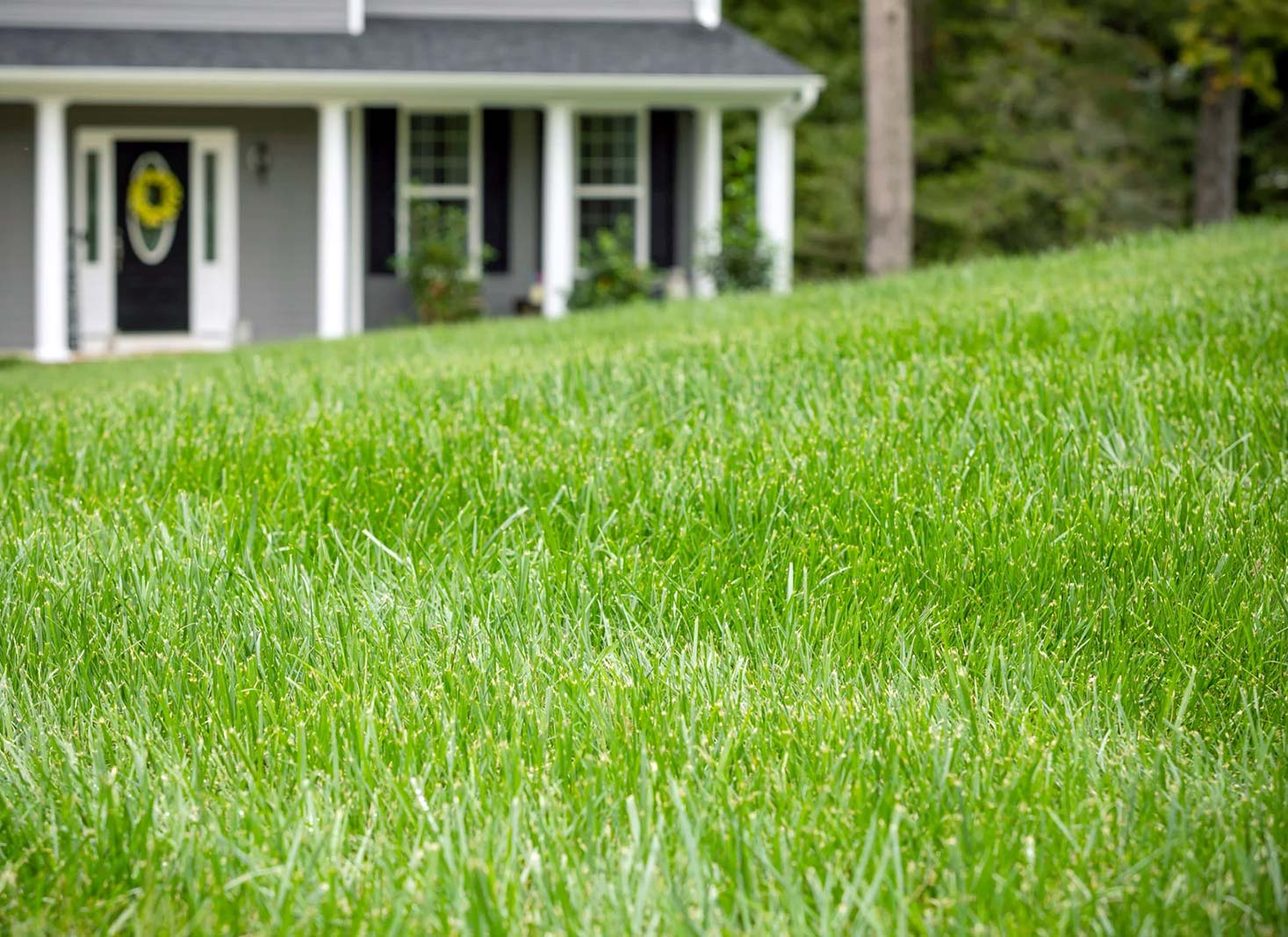
Warm season grasses
Warm-season grasses thrive in temperatures above 70°F and typically grow best within the range of 80-95°F. These grasses, such as St. Augustine, Bahia, centipede, and zoysia grass, are commonly found in coastal states like Texas, Florida, and Southern California.
Warm temperatures and seasonal rains help maintain soil moisture levels, promoting growth for warm-season grasses.
However, as temperatures drop in the winter months, most warm-season grasses will enter a dormant phase, ceasing active growth and turning brown or tan in color.
It’s essential to adjust your lawn care routine during this time, as these grasses require different care compared to their cool-season counterparts.
Cool season grasses
Cool-season grasses, on the other hand, can remain healthy and robust even in temperatures below 50 degrees Fahrenheit.
These grasses, including perennial ryegrass and fine fescue, are better suited for colder climates, such as those found in Minnesota, Washington, and New York.
Cool-season grasses excel at absorbing moisture and nutrients at temperatures between 55-65°F, allowing them to maintain their vivid green shades even during colder weather.
However, cool-season grasses may struggle during hot summer temperatures, as their growth can be stunted or even halted by extreme heat. It’s crucial to adapt your lawn care routine to ensure your cool-season grass stays healthy and vibrant.
Soil temperatures and their role in grass growth
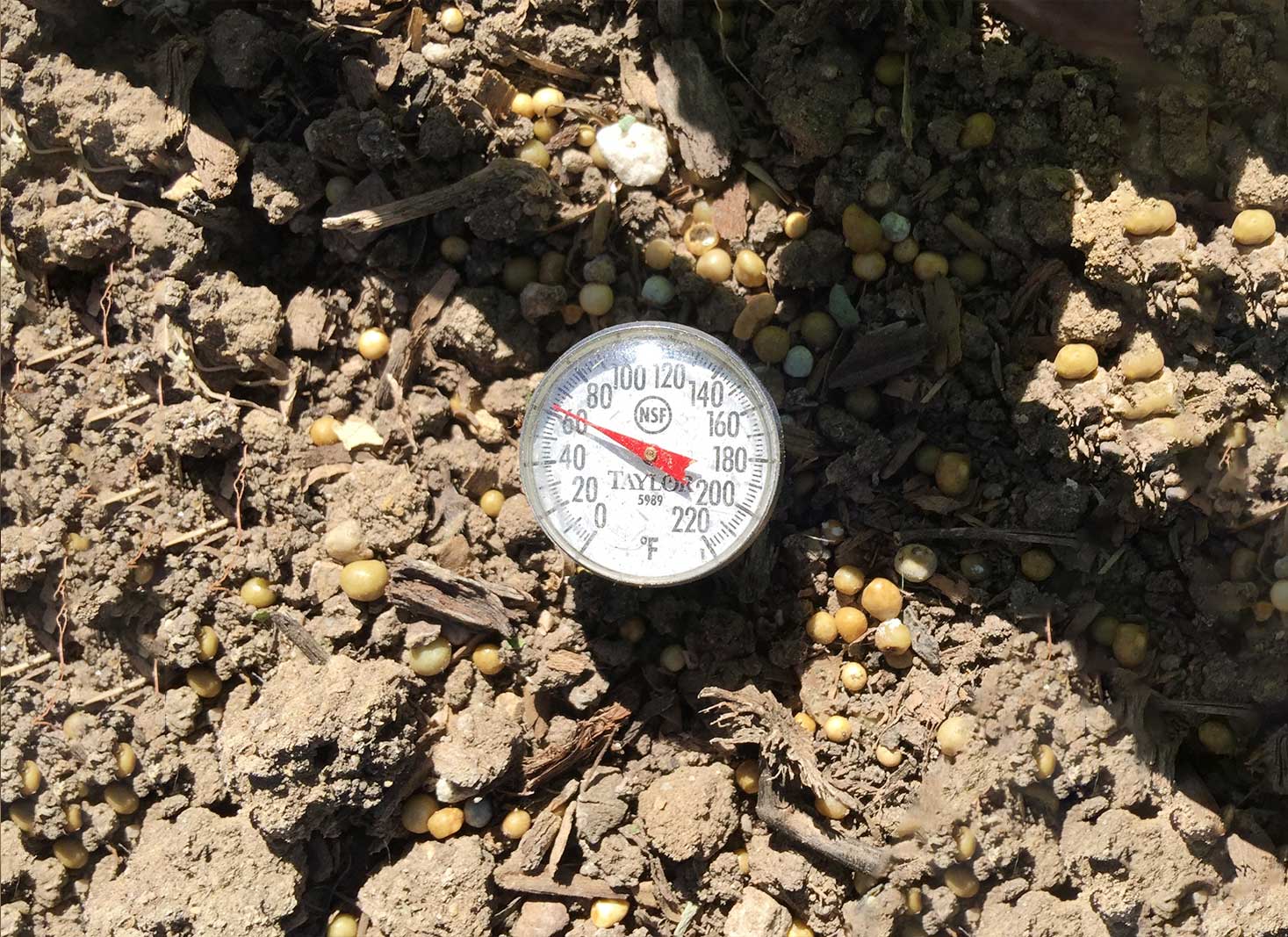
Soil temperature is of paramount importance for grass growth, as it influences vital plant functions.
Soil temperature is usually approximately 10 degrees lower than the average daily air temperature over the past few weeks, providing a good indication of the conditions your grass is experiencing.
By keeping an eye on temperature trends, you can adjust your lawn care routine to ensure your grass receives the optimal conditions for healthy growth.
Measuring soil temperature
Measuring soil temperature is simple with the right tools. A soil thermometer or a digital thermometer can be inserted into the soil to the depth of planting, and you simply wait for the reading to stabilize.
Regularly checking soil temperature can provide valuable insights into the well-being of your lawn, allowing you to make informed decisions about watering, fertilizing, and other lawn care practices.
Preparing soil for optimal growth
Incorporating organic matter into the soil to promote healthy grass growth is mulching grass clippings rather than removing them. These help break down and return valuable nutrients to the soil, supporting the growth of new grass blades.
Aeration and fertilization are also essential to prepare the soil for optimal growth. Creating small holes in the soil allows air, water, and nutrients to penetrate deeper into the root zone, promoting healthier root growth and overall grass vitality.
Fertilization supplies your lawn with the necessary nutrients for strong, vibrant growth. By combining these strategies, you can create a healthy soil environment that supports robust grass growth in any climate.
Does grass stop growing at a certain height?
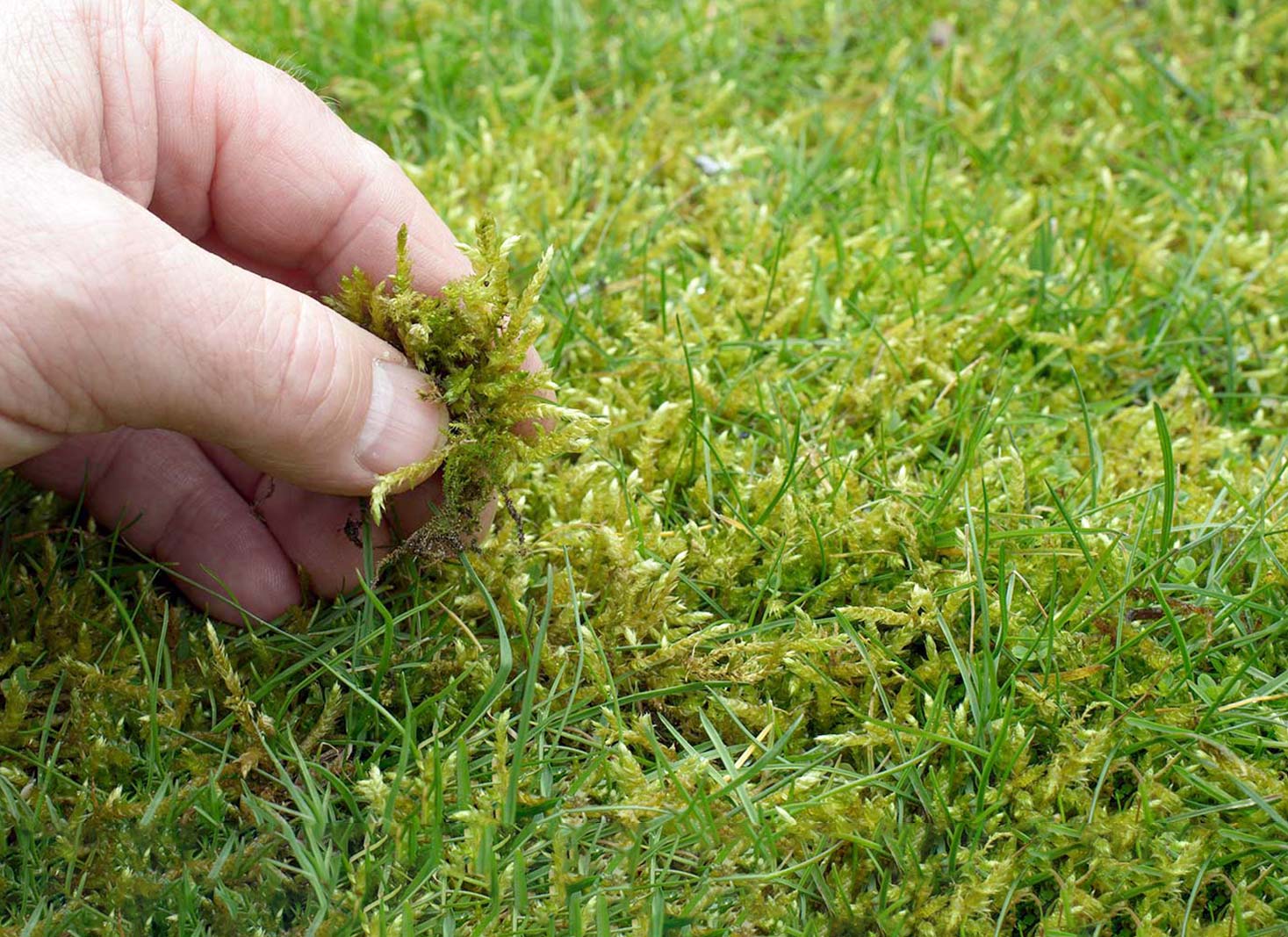
Grass can enter a state of dormancy in response to certain conditions, such as extreme temperatures or lack of water.
During dormancy, grass blades may take on a brown or tan hue, and growth ceases. However, grass can still survive and thrive once conditions improve, returning to its lush, green state.
Understanding dormancy is important for proper lawn care, as it helps you adjust your lawn maintenance practices to support your grass’s needs during these challenging periods.
For example, for warm-season grasses, it is recommended to cut them to two inches before winter in November, prior to their dormancy period.
For cool-season grasses, cutting them to two inches before winter will help them survive, and the last mow should be performed when soil temperature drops.
| Type of grass | Recommended length to cut | Recommended time to cut |
|---|---|---|
| Warm-season grasses | 2 inches | Before winter, prior to dormancy period |
| Cold-season grasses | 2 inches | Before winter, when soil temperature drops |
What happens if you don't cut the grass?
If you don’t cut your grass, it can become too tall and deprive its roots and soil of sunlight and other nutrients, leading to suffocation and eventual death.
Furthermore, cutting grass during a freeze can result in stress and damage that will be difficult for the grass to recover from, causing unsightly yellow patches on your lawn.
Regular mowing is essential for maintaining a healthy, attractive lawn, so be sure to stay on top of this important lawn care task.
Caring for your lawn during extreme temperatures
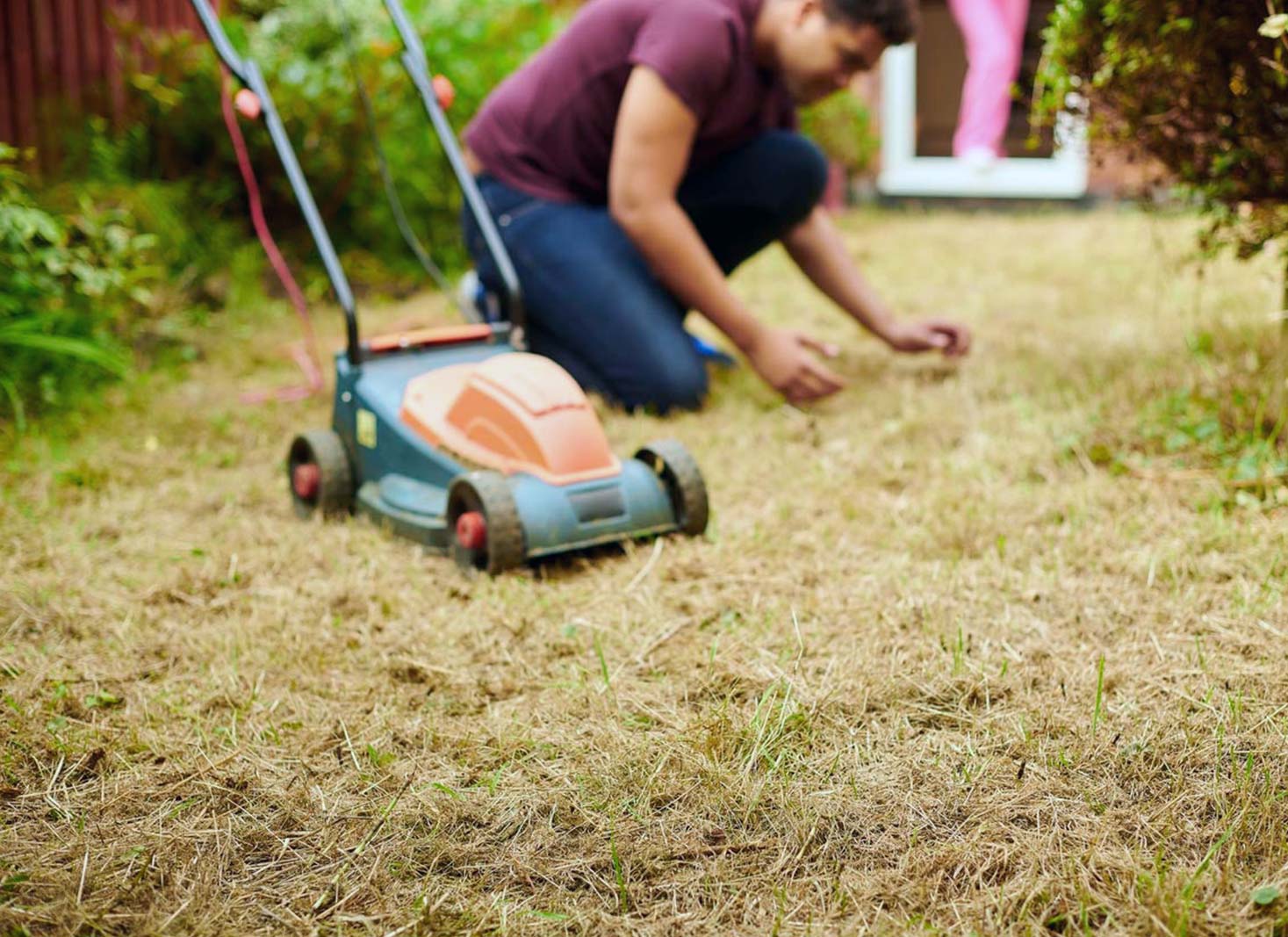
Extreme temperatures can pose a significant challenge to the health and vitality of your lawn. Grass can enter a state of dormancy during periods of extreme heat or cold, ceasing growth and turning brown or tan in color.
To prevent your grass from going dormant or dying during drought conditions, it’s essential to water it every 6 weeks, avoid using fertilizers, and adjust your watering practices accordingly.
By taking these precautions and adapting your lawn care routine to the specific needs of your grass during periods of extreme temperatures, you can help ensure that your lawn remains healthy and vibrant throughout the year.
Watering strategies
During drought conditions, inadequate hydration can cause your lawn to become brown and enter a dormant state. By increasing the amount of water you provide, you may be able to bring your grass out of dormancy and restore its lush, green appearance.
It’s essential to monitor your lawn’s water needs during periods of extreme heat or cold and adjust your watering practices accordingly to ensure your grass receives the hydration it needs to survive and thrive.
It’s important to note that overwintering dormant grass during drought conditions can actually be detrimental, as the grass will not be able to absorb the water as quickly, and it may struggle to return to a healthy, green state.
Be sure to strike the right balance between providing enough water to support your lawn’s health and not overwhelming it during periods of dormancy.
Fertilizing and lawn maintenance
Fertilizing is an essential component of proper lawn care, but it’s important to adjust your fertilizing practices during periods of extreme temperatures.
During drought conditions, it’s best to avoid using fertilizers, as they can exacerbate the stress your grass is already experiencing due to the lack of water.
Instead, focus on providing your lawn with the necessary water and nutrients through proper watering practices and the use of natural fertilizers, such as grass clippings.
Recognizing dormant vs. dead grass
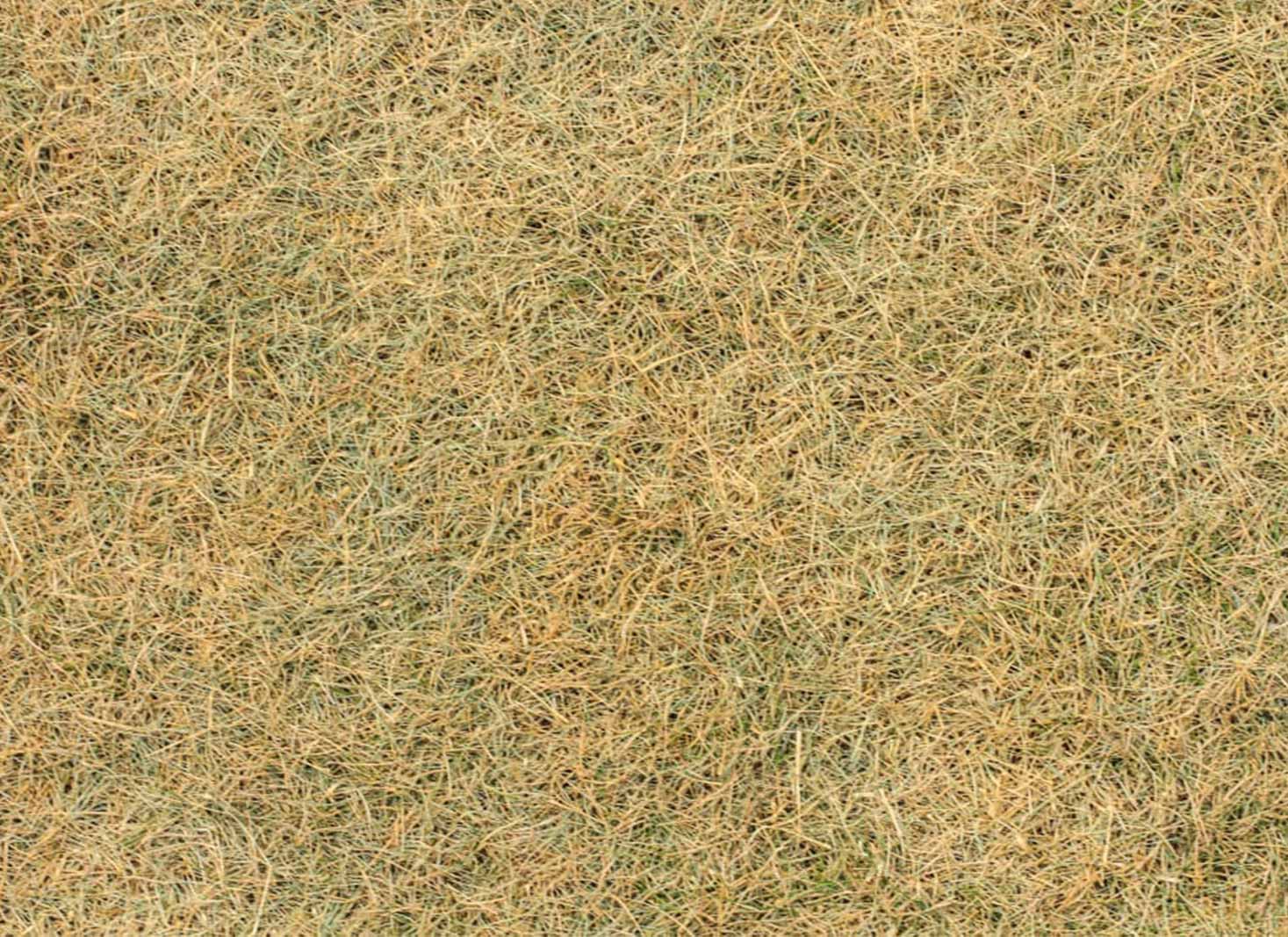
It can be challenging to determine whether your grass is simply dormant or actually dead, as both states can cause the grass blades to take on a brown or tan hue.
Dormant grass is still alive, but it has stopped active growth in order to conserve energy and protect itself from extreme temperatures.
Dead grass, on the other hand, will not revive and will need to be replaced.
Recognizing the signs of dormancy and death in your grass, you can make informed decisions about your lawn care routine and ensure the health of your lawn.
FAQ's
For a healthy winter lawn, keeping the grass at around 2-2.5 inches is the best option. This allows the turf to hold on to enough of its strength to survive cold temperatures, while still protecting against disease spread from longer grass.
If you have cool-season grass, it’s generally best to stop mowing your lawn in late fall when the temperature begins to drop below 50 degrees Fahrenheit and the grass stops growing.
This is important because mowing too late in the season can damage the grass and make it more susceptible to disease and pests.
Yes, grass growth does typically slow in the fall; however, you can still ensure its health and longevity by watering your lawn deeply, mowing regularly, and feeding it with fertilizer.
Watering your lawn deeply helps to keep the soil moist and encourages the grass to grow.
Mowing regularly helps to keep the grass healthy and prevents it from becoming overgrown. Feeding your lawn with fertilizer helps to provide the nutrients it needs to stay healthy and green.
For optimal grass growth, temperatures should be maintained between 50-55 degrees Fahrenheit. When temperatures reach beyond this range, grass growth is likely to slow down significantly and may eventually come to a complete halt.
It’s important to take note of the temperature to ensure your lawn remains in good condition.
